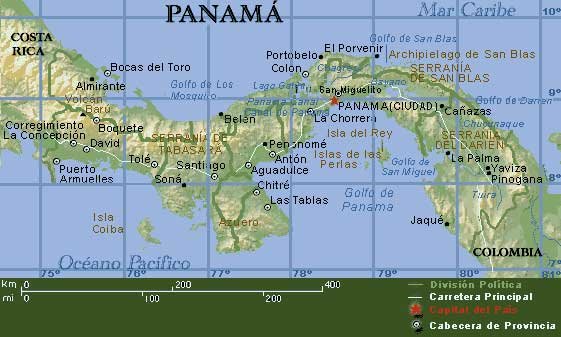Back in April, just after the All Volunteer Conference, we went to visit another volunteer who lives near Chitre, where AVC was held. While there, some folks in the community were pressing sugar cane.
Sugar cane is pretty much a grass that can be grown one little plot in your yard, or in massive fields. The companies burn the fields to get the scratchy leaves off before the workers go through and cut it (so they end up sooty and blackened, but not scratched), and you'll see heavily weighted trucks carrying stacks of the about 8-foot long, 2-inch across stalks to the factories, where it is processed.
But small farmers do it on a smaller scale. They load the cane into horse-drawn carts and haul it to the trapichi, which is a horse (or person) powered press. There, each stalk is passed through twice to squeeze out the sugar juice.

(Jon and April watching the horse and farmer press cane; the juice drains out onto the metal ramp which sends it to a filter to remove chunks and then drip into the barrel)
Once the juice is squeezed out, it is heated / simmered over several days to concentrate it. Huge metal bowls are used to the process. This farmer had his built into the stove for the process.

(The bowl of sugar cane juice concentrating. The stick has a large strainer bowl on it for scooping out the concentrate.)
His stove was almost like the Estufa Lorenas, in that it concentrated the heat, thus using less firewood. The mouth of this stove is an old wheel rim.
 (The stove mouth. The barrels hold processed sugar juice; buyers will pay $50 for the barrel, but then probably sell the contents piecemeal in town for $100)
(The stove mouth. The barrels hold processed sugar juice; buyers will pay $50 for the barrel, but then probably sell the contents piecemeal in town for $100)
Of course, there are other kinds of sugar and honey you can press. :) April and I, dressed up to go to a Samy y Sandra Sandoval concert the next night at the International Fair of the Azuero (the Azuero is the eastern side of the big peninsula on the south of Panama, containing the provinces of Herrera and Los Santos, and is famous for its "typical" Panamanian culture). Samy y Sandra's grandmother lives in the community where we saw the cane being pressed.








No comments:
Post a Comment